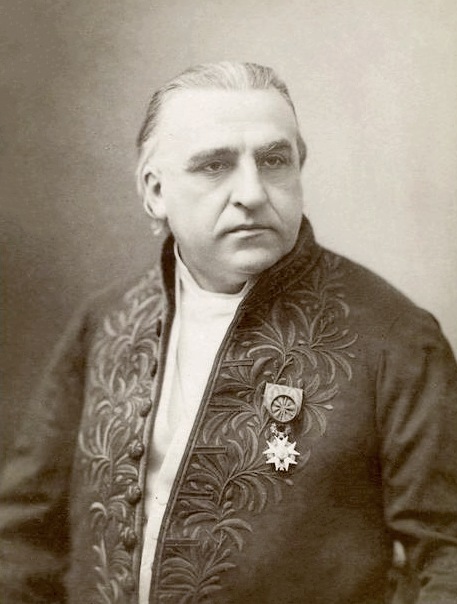 |
| Charcot |
Medical students and doctors worldwide undoubtedly recognise the name Charcot in one form or another. Undoubtedly the father of modern neurology alongside his mentor Duchenne, Jean-Martin Charcot was a French neurologist and anatomist who has 15 medical eponyms towards his name. His work on hysteria and hypnosis, although later refuted, contributed to the development of modern psychiatry. He was so influential that he was even referenced in Bram Stoker's Dracula.
Born and raised in Paris, Charcot studied medicine at the University of Paris in 1853 and became a professor in 1860. He practiced at the largest hospital in France,
the Salpetriere hospital, ever since and opened Europe's first neurology clinic in 1882. As a doctor with remarkable teaching skills, his clinic attracted students across the continent; Freud, Babinksi, Bouchard, Tourette amongst others became influential figures in medical history in their own rights
The Clinician:
Though Charcot trained as a pathologist, he became a prominent clinician and recognised the importance of correlating clinical and post-mortem anatomical findings. In conjunction with Duchenne's emphasis on clinical examinations, Charcot promoted a systematic neurological history & physical examination to his students. His unique teaching technique forms the basis of the modern-day bedside teaching; it included interviewing patients diagnosed with the same condition during case presentation, imitating neurological symptoms of the patients, and drawing pictures illustrating the main clinical findings of a disease.
 |
| Painting by Andre Brouillet of a clinical lesson on hysteria by Charcot (standing) with the vanishing woman Marie Blanche. The assistant holding Blanche is Joseph Babinski the central figure, sitting in front of the professor is Georges Gilles de la Tourette |
Neurology:
Charcot described and named
Multiple Sclerosis (MS) for the first time, correlating clinical features with postmortem findings of his patients' brains. Although prior descriptions of MS date back to the 14th century and the pathognomonic periventricular plaques were described by others before him, the clinical correlation was not established. He was the first to diagnose MS in a living patient; he proposed a triad of symptoms (as medical students would know) of nystagmus, intention tremor, and scanning speech.
Charcot demonstrated cortical motor centres in humans, delineated the brain's vascular supply and , with his intern Charles Bourchard, described miliary aneurysms (
Charcot-Bouchard aneurysms). Amyotrophic lateral sclerosis (or
Motor Neuron Disease), which he also described, is still referred to as Charcot's disease in many parts of the world. He noted that in infantile paralysis the spinal lesions were limited to the anterior horns of the grey matter. With Marie he described the peroneal form of muscular atrophy, later called
Charcot-Marie-Tooth disease.
By studying a complication of syphilis called
tabes dorsalis that led to a loss of sensation in both legs, Charcot hypothesised that absent sensation led to abnormal weight-bearing while walking, eventually cause joint deformations and bony destructions. Although today it is predominantly associated with diabetes, a deformed joint due to impaired sensation is still called a
Charcot joint (neuropathic joint).
He had clear views on the differentiation of hysteria from epilepsy, neurosis from psychoses, and multiple sclerosis from paralyses agitans (the old name for Parkinson's disease, literally meaning
Shaking Palsy). Charcot advocated the renaming of the disease to
Parkinson's disease (la maladie de Parkinson) in honour of
James Parkinson, the first man to describe the disease decades prior.
Charcot's Trainees:
Medical students and doctors would likely recognise a few familiar names:
- Sigmund Freud
- Joseph Babinski
- Charles-Joseph Bouchard - his intern and perhaps the most dramatic protégé. After Bouchard attained professorship at the University of Paris, his relationship with his mentor Charcot gradually deteriorated. Their strong personalities, their ambition to have schools of their own, and their competition to become the most influential man in the medical school resulted in antagonism between them. The most tragic consequence of this antagonism took place in 1892 when Bouchard presided over the competitive examinations for agrégation, in which Joseph Babinski, one of Charcot's youngest pupils, was a candidate. Charcot wanted his pupil to be nominated but Bouchard eliminated him in order to nominate his own pupils. The nominations were appealed but finally Bouchard's decision was upheld. Babinski did not retake the examination and never became a professor at the medical school.
- Pierre Janet
- William James
- Pierre Marie
- Albert Londe
- Georges Gilles de la Tourette - Charcot bestowed the eponym for Tourette syndrome in his honour.
- Alfred Binet
- Albert Pitres amongst others.
 |
| Proudly borrowed from Wikipedia |
Further Reading:
For the definitive biography, I recommend Christopher Goetz's in-depth 1995 biography of Charcot (ISBN 978-0-19-507643-1). It is a scholarly masterpiece and details his life in exquisite detail.
Charcot's original works and documents can also be freely accessed on the Internet Archive.
References for the article are as follows:
Tan SY, Shigaki D. Jean-Martin Charcot (1825–1893): pathologist who shaped modern neurology. Singapore Med J. 2007;48:383–384
Kumar DR, Aslinia F, Yale SH, Mazza JJ. Jean-Martin Charcot: the father of neurology. Clin Med Res. 2011;9(1):46–49. doi:10.3121/cmr.2009.883
The Science Museum:
Jean-Martin Charcot (1825-93).
HAAS L. Jean Martin Charcot (1825-93) and Jean Baptiste Charcot (1867-1936). Journal of Neurology, Neurosurgery & Psychiatry. 2001;71:524








































.jpg)

